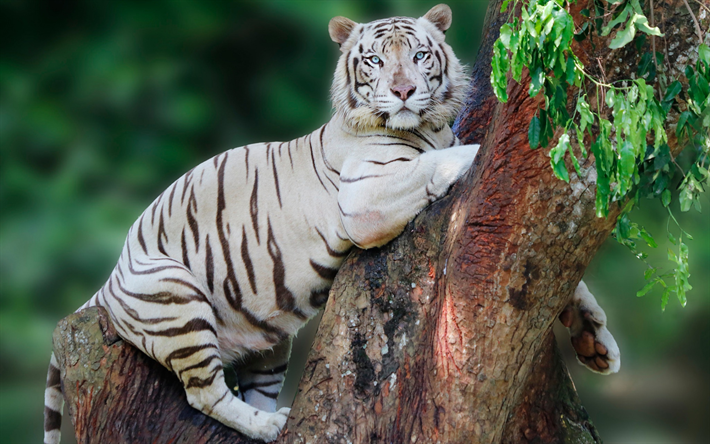
The authors point out that addressing disease threats to tigers and their prey can be mutually beneficial to humanity, as some important pathogens also impact domestic animals and those who depend upon them. “We need to work with these individuals to find out how best to support them, whether that’s through the delivery of additional training, provision of field equipment or investment in local laboratory capacity.” Jessica Bodgener, wildlife veterinarian at the Durrell Institute of Conservation and Ecology. “It’s important to remember that the people best placed to collect these samples are often operating under field conditions they may not have a veterinary background and could have limited access to things we take for granted, like a reliable electricity supply,” says Dr. “It is a privilege to work with these endangered animals,” says Gilbert, “and we owe it to them to learn as much as we can whenever they are handled.” To do this, the authors advocate that the collection, analysis and archiving of blood and other diagnostic samples should become routine procedure whenever a wild tiger is handled for conflict resolution, rehabilitation or radio collaring. “We've got a lot of catching up to do to really understand, and try to address, the situation.” “Obviously, we're behind the ball here as veterinarians and as tiger conservationists in both recognizing and also understanding the threat that infectious disease represents, particularly for the smaller and depleted tiger populations that we have today,” says Gilbert.

The authors concluded that there is an increasing need to integrate health monitoring and disease surveillance into wider tiger conservation strategies. “Without food to eat, tigers simply cannot exist.” '19, Cornell research analyst and wildlife veterinarian. “As apex predators, tigers play a key role in their ecosystems and rely on the availability of prey animals,” says co-author Dr. Capable of decimating wild boar populations, the virus quickly expanded throughout tiger range and is now poised to the north and south of tiger strongholds in India. The virus, which has been spreading across Europe and Asia, first reached tiger habitat in 2019. In the case of ASF, the primary threat is to the wild boar that are tigers’ main prey in many regions. Next, they identified specific pathogens that are currently of most concern, including canine distemper virus (CDV), carnivore protoparvovirus, and African swine fever virus (ASF). Using the information they gathered, the authors outlined three mechanisms through which disease can threaten tigers on a population level: 1) by reducing the survival of breeding-age tigers, particularly females, 2) by reducing the productivity of breeding tigers (i.e., how many litters they have and how many cubs per litter), and 3) by reducing the availability of prey for tigers when the prey themselves succumb to disease. The literature review was published in the April 5 th issue of Frontiers in Ecology and Evolution. Of the 280 papers that were relevant to tiger health, they found only 35 that focused on wild and not captive tigers. In an effort to bridge the information gap, Gilbert and colleagues reviewed literature dating back to 1928. “But disease is just another part of tiger ecology and needs to be incorporated into our conservation thinking."

"For years, the whole issue of infectious disease as a threat to tigers has been largely overlooked by the conservation community” says Gilbert. We wanted to make the issues of tiger and prey health and disease accessible to everyone involved, whether locally or internationally, and to provide an entry point to address disease as a threat to tiger conservation.” “But disease is just another part of tiger ecology and needs to be incorporated into our conservation thinking. “For years, the whole issue of infectious disease as a threat to tigers has been largely overlooked by the conservation community,” says Gilbert. As a result, there is a lack of awareness on the part of conservationists and local wildlife authorities in terms of the significance of this threat. Thus far, research on disease as a cause of mortality in wild tigers has been limited. Martin Gilbert, Cornell Wildlife Health Center wild carnivore health specialist. “Given that tigers are already pushed to the brink, losing just a few to disease can be the difference between population survival and extinction,” says Dr. Habitat loss, along with poaching and human-wildlife conflict, have driven this decline and resulted in small, isolated populations that are increasingly vulnerable to outbreaks of disease.

In the past century, the global tiger population has dwindled from over 100,000 to fewer than 4,000 animals.


 0 kommentar(er)
0 kommentar(er)
